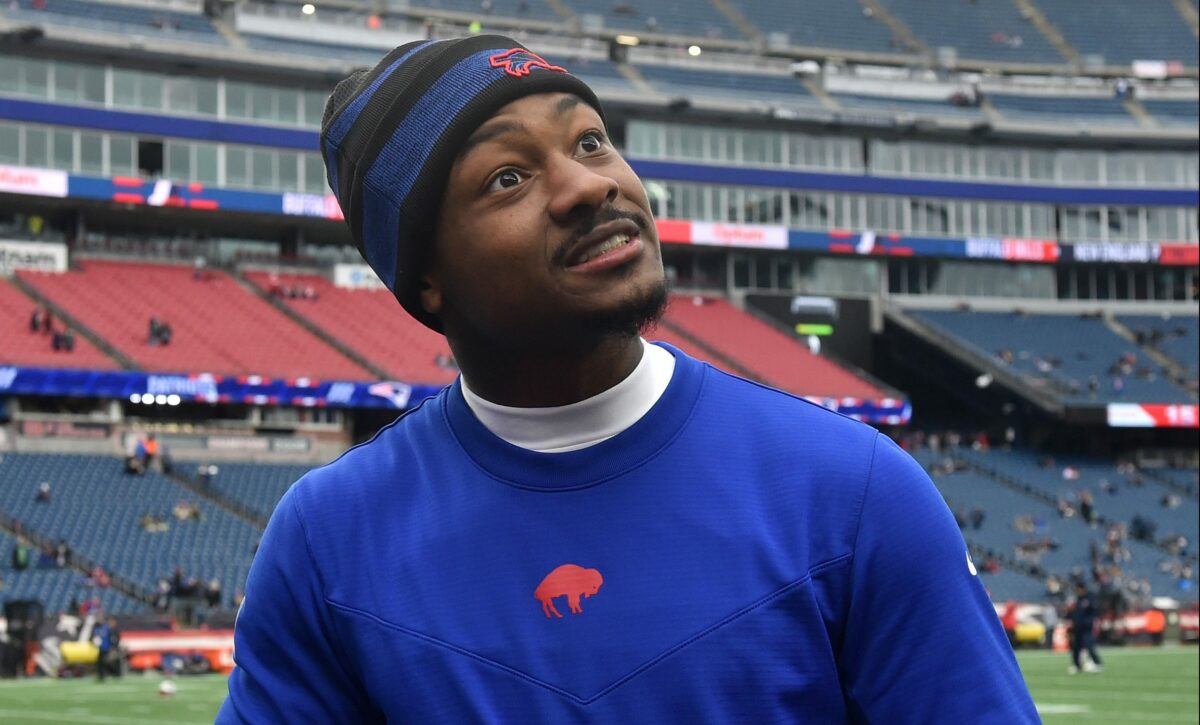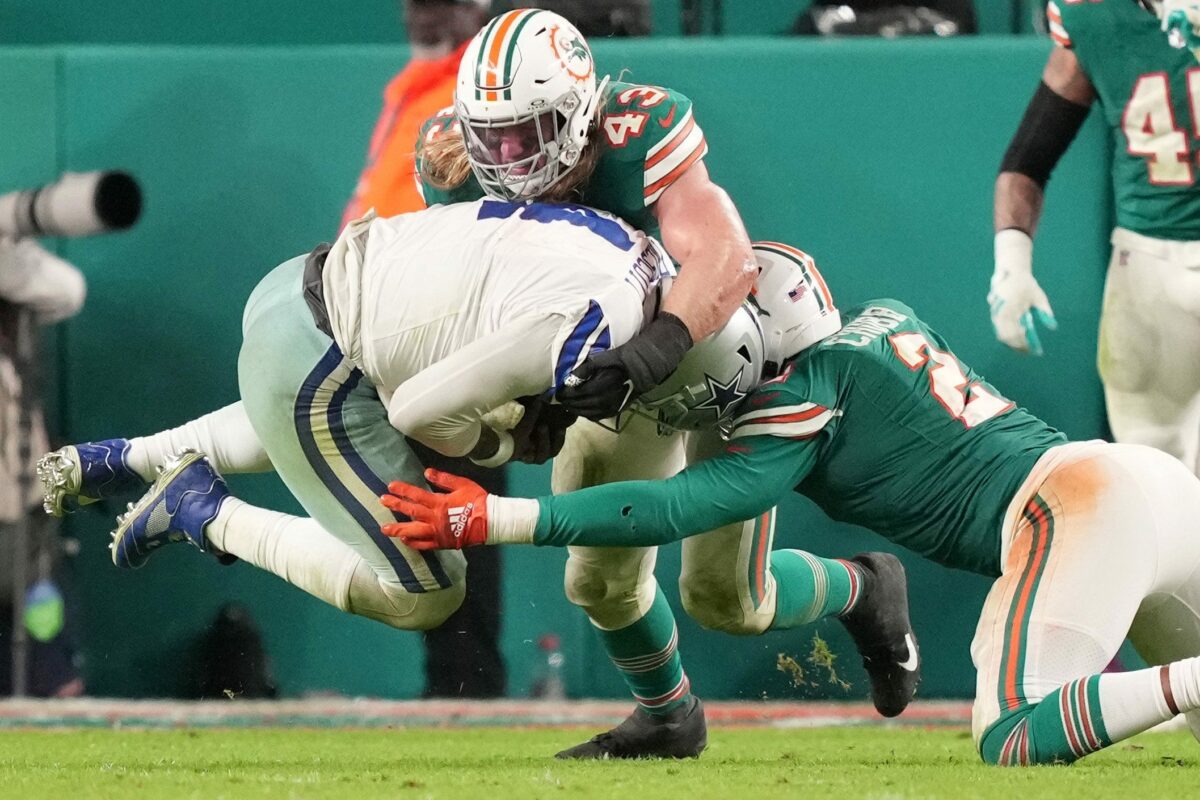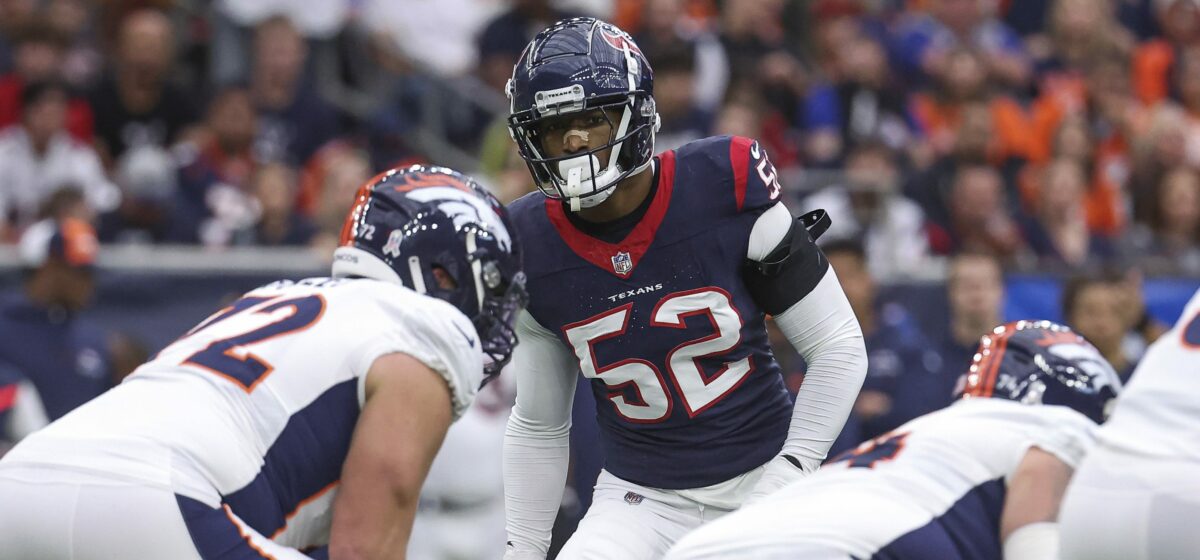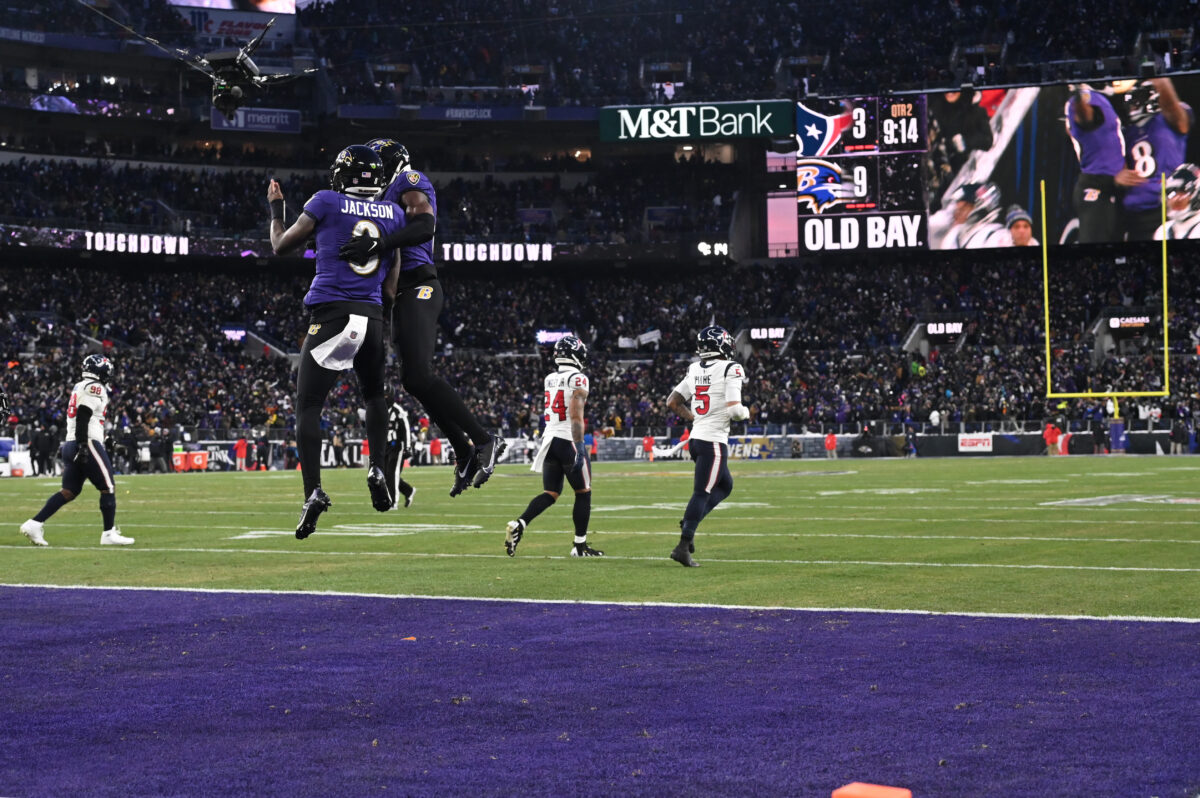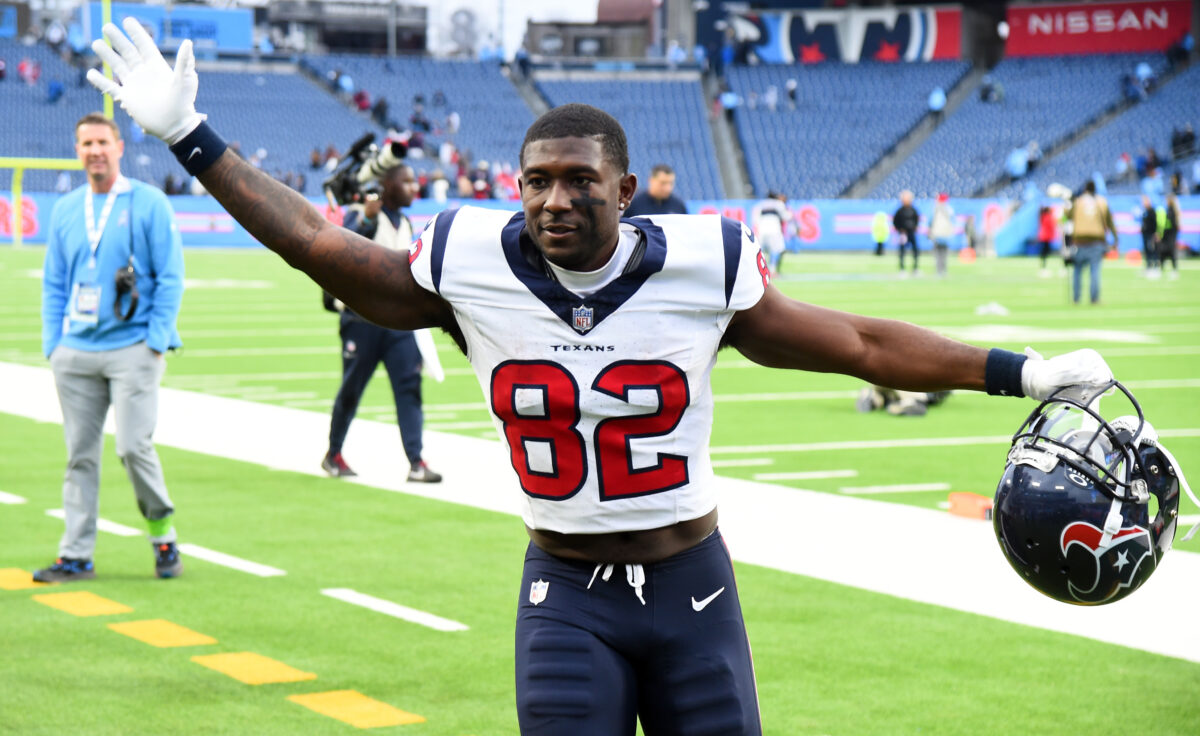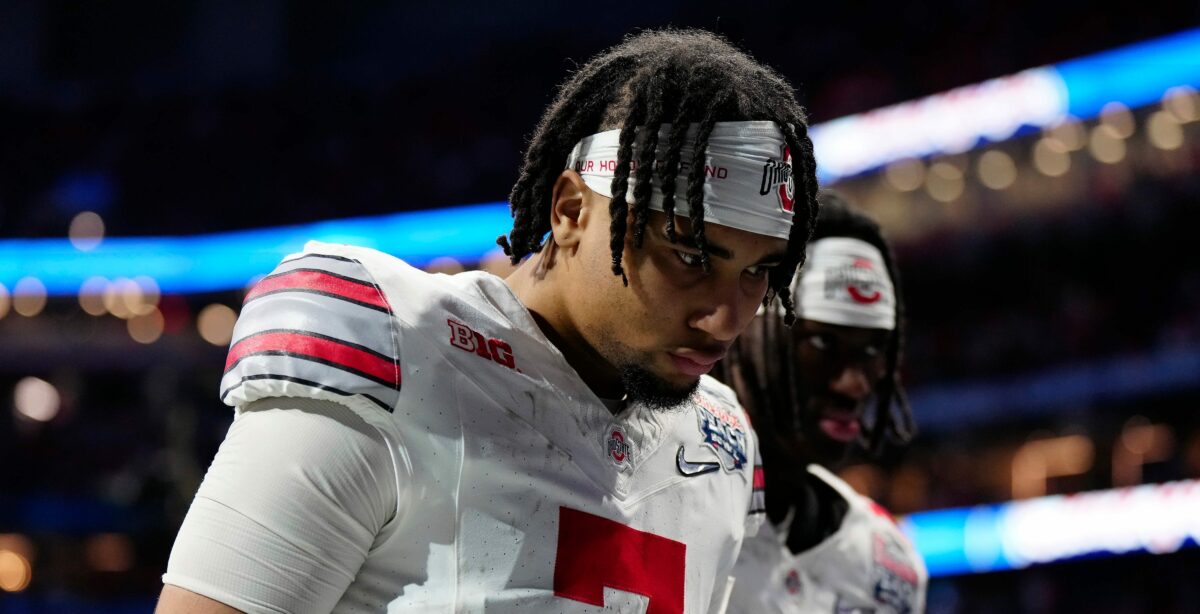Lamar Jackson beat the Texans’ blitz-heavy plan last week, and he’ll now have to solve Steve Spagnuolo’s creative pressures. Here’s how he can.
Baltimore Ravens quarterback Lamar Jackson is most likely closing in on his second NFL MVP award at age 27, which is pretty nifty. The primary reason that Jackson is in line for that is that he’s developed to the point where there aren’t a lot of holes in his game — there isn’t one way to beat him, and even if you land a few punches, Baltimore’s coaching staff is generally ready with the right adjustments.
This was definitely the case in the Ravens’ 34-10 divisional-round win against the Houston Texans. In the regular season, Houston blitzed on just 21.0% of their plays, fifth-lowest in the league. The plan against Lamar was to send quite a bit more heat.
The Texans sent six or more pass-rushers on 11 of Lamar Jackson’s 22 attempts. Jackson completed eight of 11 passes against that for 51 yards, 30 air yards, one touchdown, and a passer rating of 112.3.
This season, the Chiefs have sent six or more pass-rushers on 48 opponent attempts – quarterbacks have completed 23 of those 48 attempts for 181 yards, four touchdowns, two interceptions, and an opponent passer rating of 68.1.
One of those touchdowns allowed was the HB Seam touchdown from Josh Allen to James Cook in Week 14 against the Bills. The Bills came out with a four-strong concept to the back side, and Cook was wide open there.
Another was Jordan Love’s 12-yard touchdown pass to Christian Watson in Week 13 against the Packers. Here, the Packers handled the six-man pressure out of a zone exchange, and Love had time to hit Watson on the little circle post. The rest were tight red zone, so the rules are obviously different. So, as much as Chiefs defensive coordinator Steve Spagnuolo loves to blitz, quarterbacks aren’t helpless against it.
But here’s the thing: If you take the Texans game out, for the season against six or more pass-rushers, Jackson has completed 18 of 33 passes for 169 yards, 41 air yards, no touchdowns, three sacks, no touchdowns, no interceptions, and a passer rating of 56.3.
Ravens head coach John Harbaugh said after the game that he was not surprised at how much the Texans blitzed.
“No, not at all, because they had success doing it the first game [in Week 1]. They picked their spots. They’ve been a good blitz team. We expected it. We prepared for it. We worked on blitz stuff for two weeks, and Lamar did a great job [against it]. The offensive line did a great job. We had our moments. We had to make a few adjustments in terms of how we were picking [the blitzes] up. They changed up a couple things for this game, too. We had to flip our protections.”
They also had to make some offensive adjustments.
“I think we just did a better job getting the ball out on time,” Harbaugh said. “I think [offensive coordinator] Todd [Monken] called a different game. It wasn’t so much hold the ball and try to push the ball downfield, which Lamar [Jackson] did a good job [with]. Once Lamar was able to sit back there [in the pocket] and just pick [the defense] apart and get the ball out quick, he just did a great job with that and then took control of the game.”
The touchdown against the Texans was a cool concept in which Baltimore was in 22 personnel, if we’re calling Patrick Ricard a fullback. Ricard motioned from left to right and was wide open to that side. Nelson Agholor ran a crosser from right to left, tight end Charlie Kolar blocked safety DeAndre Houston-Carson out of the route, and that block bumped cornerback Derek Stingley Jr. out of his coverage responsibility.
So, we know that Spags will send all kinds of interesting blitzes. But against the Texans, Lamar got the ball out quickly against those blitzes drawn up by Texans head coach DeMeco Ryans and his staff, and Monken did a great job of presenting Lamar with the right answers.
Lamar also had two designed runs against six or more rushers in the Texans game – a 14-yard run with 2:12 left in the third quarter, and his eight -yard touchdown run with 6:26 left in the game.
For the season, if you take goal-line situations out of the equation and limit it to runs outside the opposing 10-yard line, Lamar has 129 runs for 780 yards, 332 yards after contact, and three touchdowns against six or more defenders in the box. This is the unique threat Jackson poses at this point – there are not a lot of holes in his game.
So, this is a primary construct of the AFC Championship game, and we’ll just see what the designs are.
